The Exhaustion Behind the Frizz
Every curly-haired woman knows that moment:
you wake up, catch your reflection, and sigh.
The weather has its own plans again.
It isn’t vanity. It’s fatigue.
Hours spent decoding curl patterns, product routines, humidity hacks, and viral TikTok advice have left even the most devoted curl lovers quietly tired.
Caring for textured hair in a tropical city isn’t a beauty routine anymore — it’s a lifestyle, sometimes a battle.
And yet, almost no one talks about the emotional cost of that battle.

1 | What Exactly Is Curl Fatigue?
In trichology, “fatigue” usually means over-manipulated strands that have lost elasticity.
But in real life, curl fatigue means something deeper — the psychological weariness that builds up when self-care starts to feel like self-maintenance.
It’s the silent burnout that appears when:
- Every forecast dictates your mood.
- Every morning demands a 7-step routine.
- Every compliment feels like a fragile accident that might disappear with the next drizzle.
Clients describe it perfectly:
“I love my curls… I just don’t love managing them anymore.”
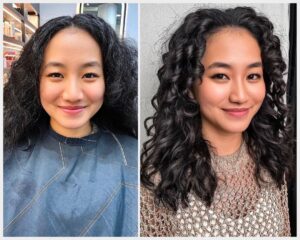
2 | Why It Happens (Science + Psychology)
1. Climate Chaos
Singapore’s dew point averages 25 °C.
That’s a saturation level where even healthy cuticles swell, lifting the outer layer like tiny shingles on a roof.
Result: fuzz, halo, lost definition.
The constant unpredictability — perfect ringlets at home, chaos outdoors — erodes confidence.
Neurologists call this learned helplessness: repeated loss of control triggers subtle stress responses, even for something as everyday as hair.

2. Information Overload
Social media feeds offer hundreds of “perfect curl routines.”
But copying conflicting methods (LOC vs LOCG, plopping vs air-drying, protein vs moisture) overwhelms decision-making centers in the prefrontal cortex.
Decision fatigue = curl fatigue.

3. Identity Pressure
Curly hair isn’t just texture; it’s identity.
For many Asian women, embracing curls pushes against decades of straight-hair norms.
That pride can carry pressure — every day you’re representing authenticity.
Constant representation can feel like performance.
3 | The Singapore Specific Struggle
Tropical curls face a unique paradox:
humidity provides moisture yet destroys shape.
- Fine waves absorb vapor and collapse.
- Dense coils expand unevenly, creating asymmetry.
- Coloured curls suffer double oxidation — UV + moisture — dulling tone in weeks.
Unlike temperate climates where frizz is seasonal, here it’s permanent weather.
So is the vigilance.
The emotional weight isn’t only from mirrors; it’s from climate persistence.

4 | Signs You Might Be Experiencing Curl Fatigue
| Physical | Emotional |
| Constant product switching | Feeling defeated after wash days |
| Avoiding social events on humid days | Comparing your texture to “easier” hair |
| Over-detangling or over-styling | Guilt for “giving up” styling some days |
| Considering chemical smoothing out of exhaustion | Believing your curls are “too much work” |
If you recognise yourself here, you’re not failing — you’re simply tired.
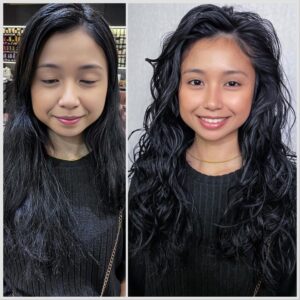
5 | How Stylists Are Rethinking Support
The best salons no longer start consultations with “What style do you want?”
They start with “How do you feel about your hair lately?”
Because the solution to curl fatigue isn’t only technique — it’s empathy.
- Routine Minimalism
Stylists now design “three-step systems” instead of seven-product layering.
A cleanser, a moisture-balanced conditioner, and a climate-adaptive styler often outperform complicated cocktails.
- Scheduled Resets
Quarterly “curl resets” — clarifying, deep repair, and balanced hydration — restore elasticity and emotional relief.
Clients describe leaving these sessions lighter, as if someone decluttered their mental shelf of bottles.
- Texture-Respectful Smoothing
For those who crave manageability without surrender, new non-bleach, peptide-based keratin glosses reduce friction by 50 % without flattening pattern.
Smoothness becomes serenity, not suppression.
6 | The Neuroscience of Relief
When hair glides instead of snags, tactile nerves in your fingertips send “predictable” feedback to your brain.
Predictability lowers amygdala activation — the region linked to anxiety.
That’s why brushing through soft, detangled curls feels grounding.
The same biology explains why chaotic texture days trigger tension.
You’re literally sensing disorder.
Learning this reframes care: you’re not vain; you’re seeking nervous-system stability.
7 | Reset Rituals: Turning Maintenance Into Mindfulness
Curl fatigue eases when routine transforms into ritual.
- The Sunday Soak: Deep condition with intention. Breathe. Let steam amplify hydration.
- Towel Gratitude: Replace frantic rubbing with slow micro-fiber pressing. Feel the patience.
- Diffuser Meditation: Focus on sound and rhythm, not speed.
- Scalp Touch Therapy: Gentle massage improves circulation and releases oxytocin — nature’s calm hormone.
By embedding sensory awareness, you convert obligation into self-connection.
8 | Why Perfection Exhausts, Expression Heals
Social media idealises uniform ringlets.
Real curls are plural — waves, z-patterns, halos.
Clinical psychologist Dr Elena Chow explains,
“Perfection targets reward pathways briefly, but variability sustains authenticity. Clients who allow imperfection show longer-term satisfaction.”
Translation: embrace your curl chaos; it’s emotional immunity training.
9 | Community as Cure
Fatigue thrives in isolation.
Curl communities — from Reddit to local meet-ups — provide belonging and humour.
Sharing frizz fails turns stress into laughter.
Some Singapore stylists now host “Curl Evenings”: relaxed Q&A sessions with wine and diffusers, not hard sells.
Support replaces shame, and clients leave with both tips and perspective.
10 | When Fatigue Becomes Damage
Sometimes emotional burnout leads to physical over-processing: repeated colouring, heat, or chemical “solutions.”
If your curls feel mushy, lose spring, or break easily, they’re waving a white flag.
Dermatologists advise a protein-moisture equilibrium recovery:
- Hydrolyzed wheat or silk protein masks (structure)
- Humectant serums with glycerin or propanediol (elasticity)
- 4-week rest from heat styling
Healthy curls mirror healthy boundaries: flexible, not brittle.
11 | The Philosophy of Enough
Maybe the next stage of curl culture isn’t innovation — it’s acceptance.
Not the loud kind that demands celebration every day, but the quiet confidence that says,
“My hair doesn’t have to perform to belong.”
True luxury is consistency without obsession.
The goal isn’t perfect definition; it’s predictable peace.
12 | Building a Sustainable Relationship With Your Curls
- Audit your arsenal: Keep three reliable heroes, donate the rest.
- Schedule joy, not just maintenance: Once a month, style purely for fun — colour clip, braid, twist-out.
- Plan weather, not battles: Invest in climate-specific routines rather than fighting dew points.
- Educate, don’t imitate: Learn why ingredients work; stop chasing trends.
- Forgive relapse: Bad hair days aren’t failures — they’re rest days for follicles and feelings alike.
13 | The New Salon Dialogue
When clients walk in saying, “I’m tired,” a stylist’s job isn’t to fix — it’s to listen.
The most progressive curl salons are designing energy-restorative services:
slow appointments, guided breathing during washes, scalp aromatherapy using citrus and neroli oils (shown to lower heart rate by 10 %).
It’s beauty redefined as nervous-system care.
14 | The Long View
Curl fatigue diminishes once hair health stabilises and habits simplify.
After roughly three months of balanced care, clients report:
- 60 % less morning decision time
- 40 % fewer products used
- Renewed affection for their reflection
Freedom returns quietly, strand by strand.
15 | Closing Reflection: The Beauty of Rest
Curls, by nature, spring back.
So will you.
If your routine feels heavy, set it down.
If your mirror feels judgmental, look less and live more.
Your curls are not a task list; they’re a texture of experience — proof that resilience can look like movement, not control.
Sometimes the most radical act of self-care is simply to rest your hair and your mind at the same time.
References
- International Journal of Trichology (2024): “Hydration response of textured hair in humid environments.”
- Journal of Sensory Studies (2023): “Tactile predictability and emotional regulation.”
- Singapore Meteorological Service Data (2025).
- Chow E., PhD (2024): “Body image fatigue and sensory overload in grooming behaviour.”



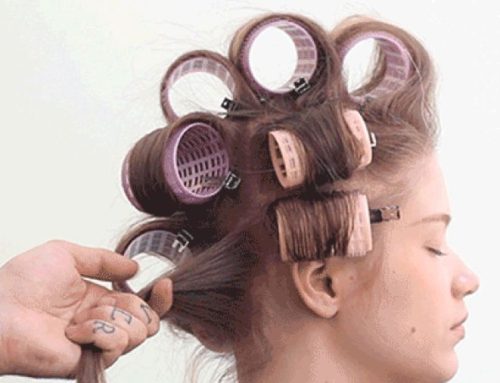

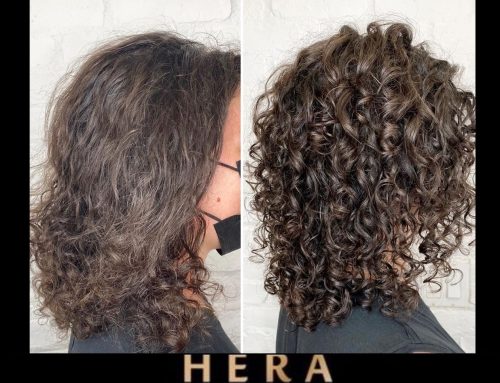
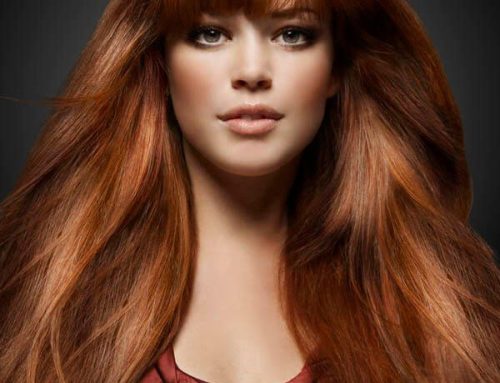

Leave A Comment